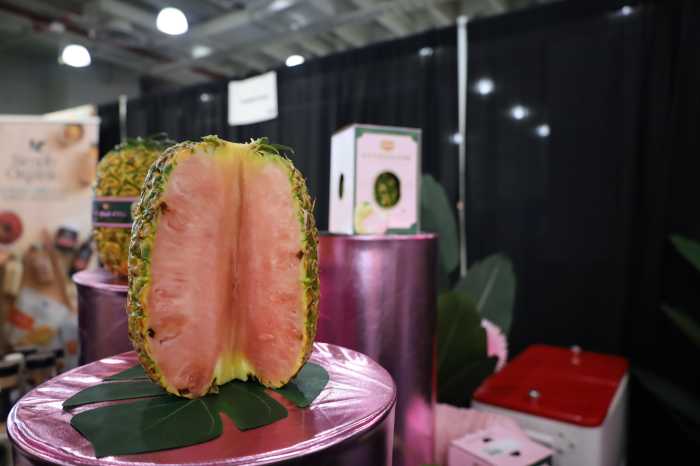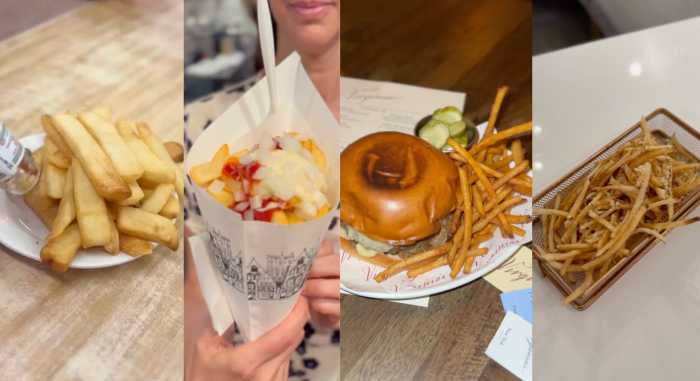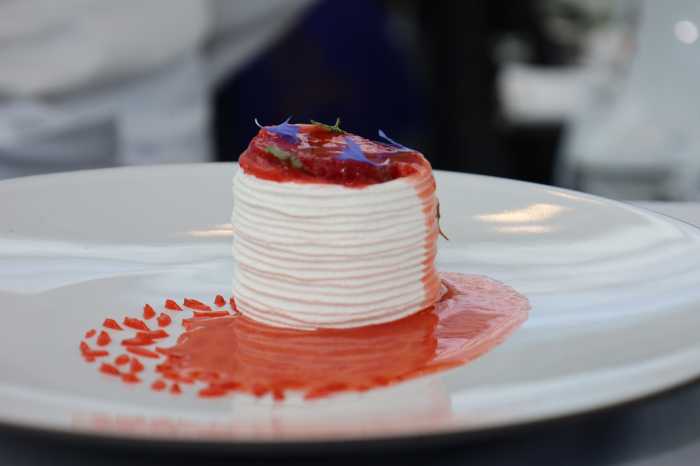
With Lunar New Year falling on Feb. 5, many New Yorkers are whetting their appetites for a celebratory feast.
“It’s my favorite holiday,” said Danielle Chang, founder of Asian culture lifestyle brand Luckyrice. “For me, celebrating Lunar New Year is a full process.”
Although it is commonly known as Chinese New Year, China isn’t the only country that celebrates the holiday — it is also observed by South Korea, Singapore, Cambodia, Malaysia, Vietnam and other Asian nations. Marking the first day of the new moon of each year, Lunar New Year celebrations can last up to two weeks — with an abundance of food.
Here’s a breakdown of a few traditional Lunar New Year cuisines from countries that celebrate the holiday and where you can find them in New York City.
China
Chinese New Year is one of the world’s most grandiose holidays, and the celebrations that take place there have influenced neighboring countries and their holidays.
The cuisine is expansive, and there’s a plethora of different dishes that are eaten across different regions to celebrate the new year. Of those, dumplings are possibly the most common staple — they signify longevity and wealth as they resemble the shape of early currency in China, ingots, Chang said.

Chinese-style dumplings, or jiaozi in Mandarin, are easy to find in the city, thanks to restaurants such as the ever-popular Vanessa’s Dumpling House, 88 Lan Zhou Handmade Noodles and Excellent Dumpling House, to name a few.
One of the most well-known spots for dumplings is also one of the city’s oldest Chinese restaurants — Nom Wah Tea Parlor in Chinatown. Serving dim sum and dumplings since 1920, Nom Wah Tea Parlor is partnering this year with Chang’s company Luckyrice for the “Lucky 8” menu, featuring eight items, including two kinds of dumplings, pan-fried noodles, stir-fried sticky rice and chrysanthemum tea.
Chang, who helped curate the menu (available from Feb. 3 to 13) with Nom Wah’s owner Wilson Tang, said each featured item has a special meaning behind it. Along with the dumplings that represent fortune, the noodles signify longevity, and the sticky rice stands for the idea of sticking together with loved ones, Chang said.
“For Lunar New Year, there’s always a lot of symbolism behind the foods we eat,” she said. “For each of the dishes on the set menu, there’s a symbolism behind it that makes it auspicious for the new year.”
Another classic Chinese dish for the New Year is the nian gao, a rice cake dish that sometimes translates to “year cake” and can be served sweet or savory. The sweet nian gao is made with brown sugar and glutinous rice when prepared in Cantonese style, and it can be found in several Chinese bakeries throughout the city such as Lung Moon Bakery on Mott Street in Manhattan and Dragon Bay in Borough Park, Brooklyn. If you’re looking for a savory nian gao, which often entails pork and scallion and hails from Shanghai, Nan Xiang Xiao Long Bao in Flushing, Queens, and 21 Shanghai House in Manhattan are a good bet.

The turnip cake is also a common dish served at a Chinese New Year feast. Though considered one of the celebratory dishes eaten during the holiday, turnip cake can also be found year-round as it is a standard dim sum dish. As such, most dim sum restaurants have the common style of the dish — pan-fried and in squares — including, but not limited to, Asian Jewels Seafood Restaurant in Flushing and East Harbor Seafood Palace and Pacificana, which are both in Sunset Park, Brooklyn.
The highlight of a lot of families’ New Years feast this year will likely be a type of pork dish. While pork is commonly eaten every Lunar New Year, this year, it has a special place on the table as 2019 is the year of the pig.
“Eating pork basically symbolizes that everything will be a success in the coming year,” Chang said.
Hakkasan in Midtown is offering a special New Year menu through Feb. 19 that features a crispy suckling pig with fried rice.
South Korea
Lunar New Year is also a big holiday in neighboring South Korea, where it is known as seolnal or gujeong. The holiday usually lasts about three days, and people take the time to visit their ancestors on both sides of the family. Lunar New Year feasts are also an important part of the Korean holiday and involve several traditional dishes.
The most common and iconic one is dduk gook, or rice cake soup, which is usually made with a beef broth with sliced beef, egg and scallions on top. Sometimes, the soup is prepared with dumplings, in which case the dish is called dduk mandoo gook, with mandoo being the word for dumplings.
Eating the soup symbolizes the act of acknowledging the new year. It also signifies becoming a year older, as Koreans observe the East Asian age reckoning system in which a baby is born one year old and becomes a year older every New Year’s Day.

Dduk gook, another dish that can be eaten year-round, is fairly ubiquitous in New York City, especially in Koreatown and Flushing. In Manhattan, the rice cake soup can be found at Five Senses and Madangsui, among many other places. If you’re in Brooklyn, try Kim Chee Korean Restaurant in Fort Hamilton or the recently opened Haenyeo in Park Slope. In Queens, there is an abundance of options, especially in Flushing. Hahm Ji Bach is a popular spot that has rice cake soup, as are Gahwa, Buttumak and Kimganae.
Another common holiday food in Korea is an assorted platter of savory pancakes. Perhaps the most widely known savory Korean pancake is the scallion or seafood pancake, but many more varieties are made and eaten during New Years, including the kimchi, potato and mung bean pancakes.
Scallion and seafood pancakes are especially easy to find in the city, as they are offered as an appetizer at most Korean restaurants, including Soju Haus and Bangia in Manhattan and Sik Gaek in Woodside, Queens. If interested in the mung bean pancake, try Gammeeok, also in Koreatown, and if you’re curious about the potato pancake, Geo Si Gi in Flushing is worth a shot. Also in Flushing is Kun Sohn Korean Noodle House, which offers the kimchi pancake.
Singapore and Malaysia
Lunar New Year is celebrated in Singapore and Malaysia, as well. While they share the tradition of having a celebratory feast with family and loved ones, the Southeast Asian countries have their own dishes.
In Singapore and Malaysia, yusheng is a unique dish surrounded by tradition. Also called prosperity toss, yusheng is a raw fish salad with strips of raw fish, shredded vegetables, crushed peanuts and a variety of sauces, and it is usually served as one of the first dishes of the multicourse dinner. Customarily, the head of the table first adds the fish and sauces onto the plate while saying wishes for the new year, and then the rest of the table stands up and tosses the salad with their chopsticks, also while externalizing their wishes.

If you’re looking to take part in this cultural activity and dish in the city, try Rasa in Greenwich Village, which serves yusheng only around Lunar New Year. Rasa’s yusheng comprises raw salmon, daikon, jellyfish, pickled ginger, shrimp crackers and crushed peanuts, among other ingredients. The restaurant also has a special lunch menu with dishes such as roti canai, or Malaysian-style flatbread; nasi lemak, a curry chicken dish with coconut rice; and tapioca pudding.
For a sweet, Malaysian-style ending to the meal, kuih talam is available at places like Kopitiam in Manhattan and Little House Cafe in Elmhurst, Queens. The coconut and pandan layer cake is often eaten during New Year’s festivities, although it is available all year.
Read more: Polar Lounge Returns to Brooklyn Rooftop Experience































